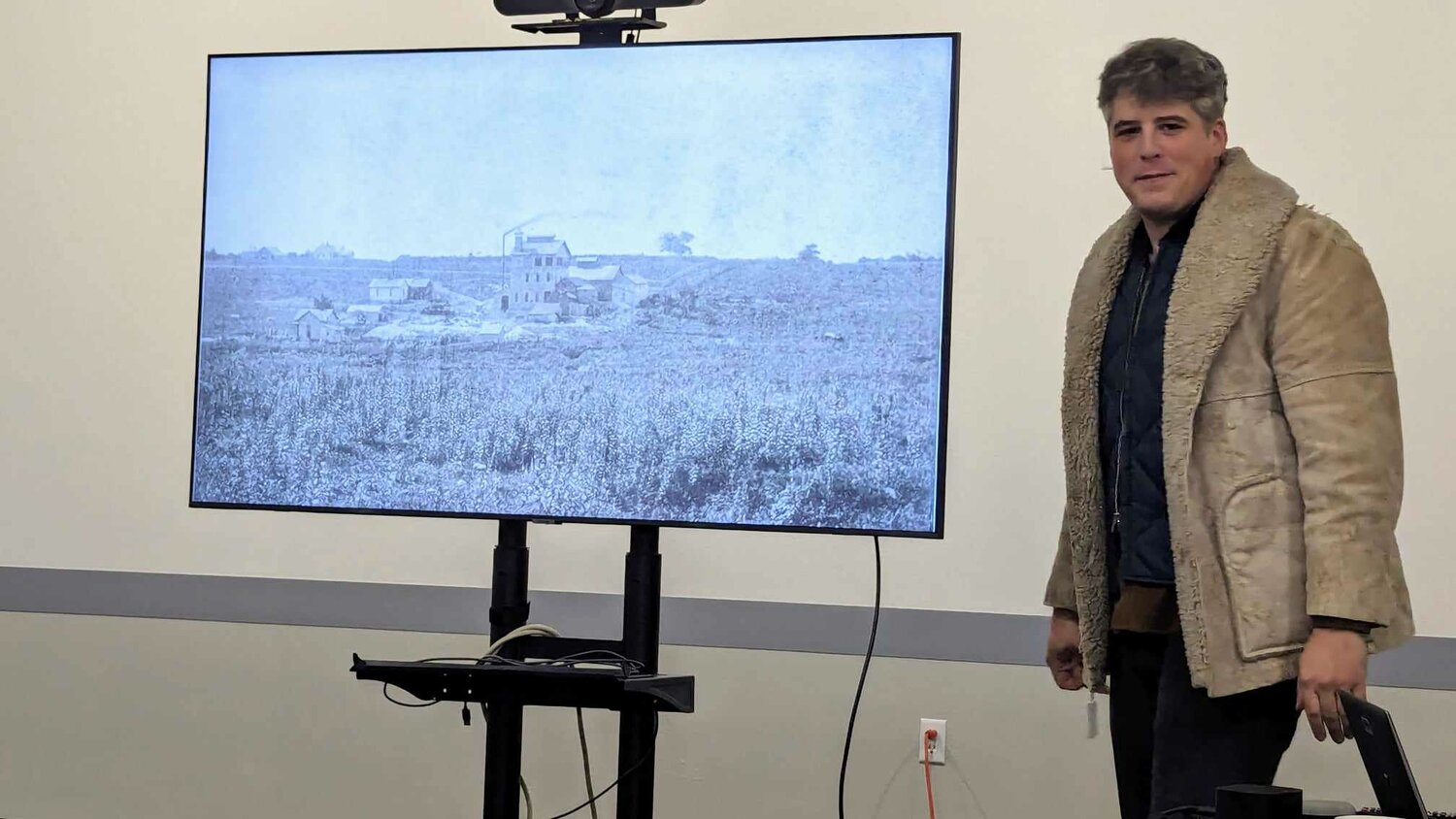YOUR BUSINESS AUTHORITY
Springfield, MO
YOUR BUSINESS AUTHORITY
Springfield, MO

The Springfield Art Museum had an unusual visitor in the fall: a beaver, spotted on the banks of Fassnight Creek, which runs south of the museum on its grounds and which the museum and city have committed to return to its natural state.
On Saturday, Caleb Sanders, conservation coordinator with the Springfield-Greene County Park Board, offered a presentation about the maintenance plan for Fassnight Creek at the museum. The regular update series, held every two weeks, is typically followed by a stream cleanup, but cold weather nixed those plans this weekend.
Sanders and museum Director Nick Nelson outlined plans to replace invasive non-native species in the creek with native varieties. A management schedule kicks off Feb. 24 with the removal of broadleaf weeds and grasses. Work will take place monthly throughout the year, with the planting of native site-specific plants set for June 24.
Sanders said a $16,500 grant from the Missouri Bird Conservation Initiative will provide 20,000 plants at the museum site. Workers and volunteers, including homeschool students and a Scouts BSA troop, will assist with the planting project. The nonprofit initiative is a consortium of 72 bird conservation organizations.
Stream work will be coordinated with construction, which Nelson said is expected to kick off this month. As previously reported, exhibitions at the museum will end by Sept. 1 in advance of capital campaign renovations, and the museum will be closed for three years, through 2027.
During that time, the museum will conduct educational programming off-site, Nelson said, in part because the building is situated on a narrow site.
“Once you stage all the equipment and all that, the front door could be blocked and parts of the building will be closed,” he said. “It’s just not going to be a good place, it’s not going to be a safe place, nor will it be a good experience for visitors.”
He said the museum would conduct its annual all-school show at another location. For other art exhibits, the museum will have to remain on hiatus until the project is completed, he said.
Nelson described the difficulty with just acquiring another exhibit space elsewhere.
“This is a specialty building because of the climate control and security and lighting and all the things that go into it, so there’s really not another space like it in town,” he said. “We would end up having to rent a space, build it out with all the specialty climate control and all that, and then by the time you spend all that money building it, you’re still working on the museum.”
He added that the creek project would move forward through construction.
“We’re moving forward with the creek, and it’s going to be really important that we continue to manage the creek,” he said. “That can’t stop, because again, nature’s on a different clock than us.”
He added that the creek is a stormwater drainage ditch. It is impacted by trash and chemicals from cars and neighborhood lawns.
“A long time ago, it stopped being a creek when they put in the culvert,” he said. “It’s engineered to look like a creek and behave like a creek, but we still have to manage it – it’s not a thing where we can say, ‘Oh, it’s natural; just leave it alone.’”
Sanders’ presentation included a detailed look at the types of flora to be planted in Fassnight Creek, with a focus on the conservation value of each.
He also discussed the history of the creek, including its pre-European settlement history, when it ran through a treeless prairie with a large bison wallow as its source. The creek came to be known as the Big Muddy, he said, and South Creek, which has already undergone restoration, was Little Muddy.
“It’s trying to serve a bunch of different purposes,” Sanders said. “It’s got to be aesthetically pleasing. We’re hoping to serve wildlife and plant communities. And it’s also got to be a drainage basin for a large subdivision – so it’s very high-pressure stakes.”
A franchise store of a Branson West-based quilting business made its Queen City debut; Grateful Vase launched in Lebanon; and Branson entertainment venue The Social Birdy had its grand opening.